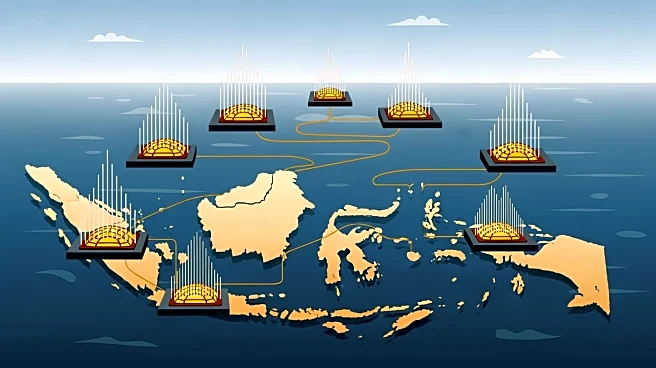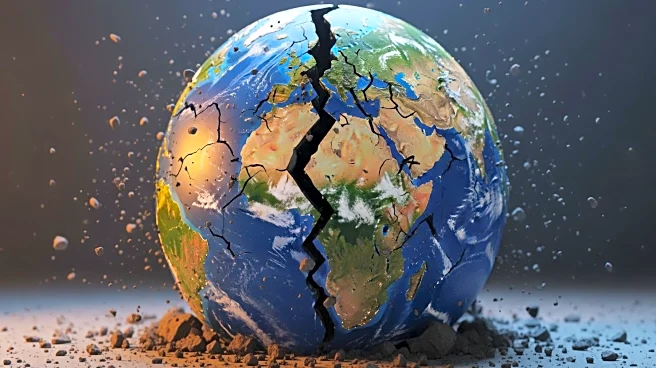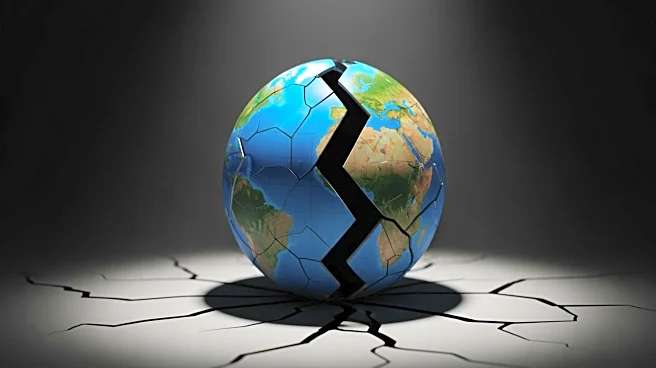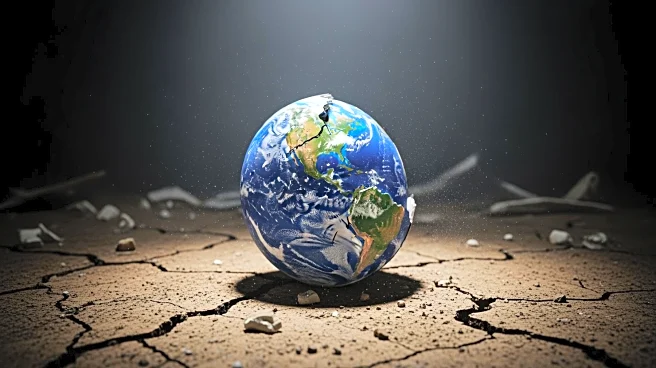What's Happening?
The United States Geological Survey (USGS) has reported four earthquakes striking Indonesia's coastline within the past 24 hours. The earthquakes varied in magnitude from 4.7 to 5.9, with the strongest
occurring approximately 40 miles from Gorontalo at a depth of 70 miles. This seismic activity is part of a broader global increase in earthquakes, with similar events recently recorded in the Caribbean, Afghanistan, and Russia's Kamchatka Peninsula. Indonesia's position on the Pacific Ring of Fire makes it particularly susceptible to frequent and sometimes severe seismic events due to the convergence of several major tectonic plates.
Why It's Important?
Indonesia's vulnerability to earthquakes is a significant concern due to its location on the Pacific Ring of Fire, a zone known for frequent seismic and volcanic activity. The country's history of devastating earthquakes, such as the 2004 Indian Ocean disaster, underscores the importance of continuous monitoring and preparedness to minimize casualties and infrastructure damage. The recent earthquakes, although not causing immediate damage or injuries, highlight the ongoing risk to densely populated coastal areas and the need for effective early warning systems and community preparedness drills.
What's Next?
Seismic monitoring in Indonesia will continue as the possibility of aftershocks and additional seismic events remains. Local and international agencies are expected to assess the potential impacts on infrastructure and prepare for possible tsunami warnings. Updates from the USGS and Indonesia's local seismological agencies are anticipated as new data becomes available, ensuring that communities remain informed and prepared for any future seismic activity.
Beyond the Headlines
The recent earthquakes in Indonesia are part of a global pattern of increased seismic activity, which may indicate shifts in tectonic movements worldwide. This underscores the importance of international collaboration in seismic monitoring and disaster preparedness, as countries within the Pacific Ring of Fire and other active zones face similar risks. The development of advanced early warning systems and community education programs is crucial in mitigating the impact of such natural disasters.













